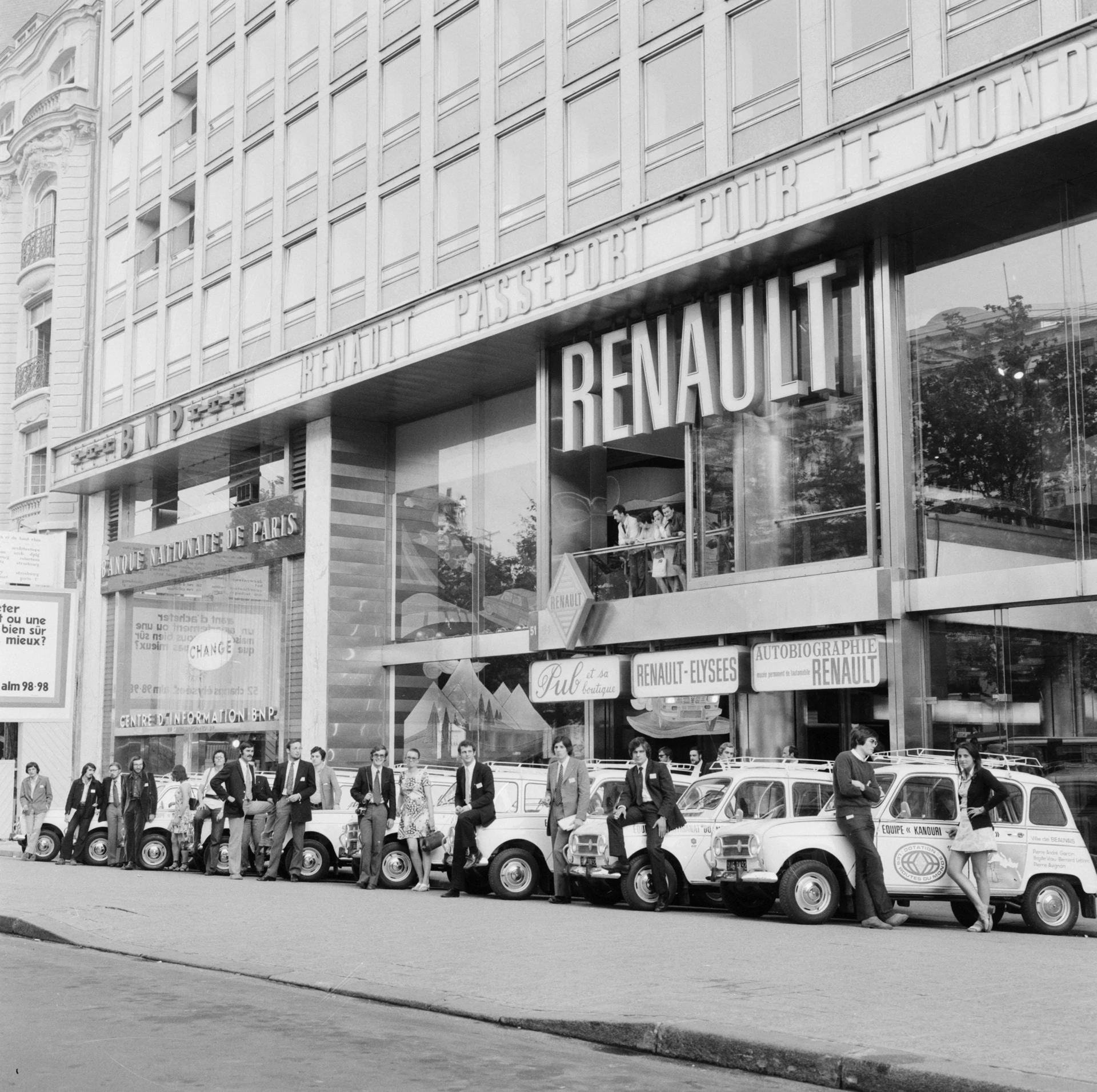It's the third best-selling car in history, behind only the Volkswagen Beetle and Model T Ford, selling more than eight million units in over 100 countries. It was manufactured or assembled in 28 different countries over a third of a century before finally ceasing production in 1994. In Spain, it was nicknamed "Cuatro Latas", in the former Yugoslavia it was called "Katcra", in Tunisia it was referred to as the "Monastir", in Zimbabwe it was known as the Noddy Car, in Argentina it earned the nickname "El Correcaminos", in Finland the "Tiparellu" and in Italy, the "Frog". Got it yet? Happy birthday to the Renault 4.
La Renault 4 came from the idea of a "blue jeans" car - not so much a people's car, but a car that transcended social boundaries. Like denim jeans which are worn the world over by all classes, Ragie Nationale des Usines Renault President Pierre Dreyfus called for the production of a versatile, inexpensive car with a worldwide calling which could match the changes in society which had been catalyzed in the peace following WW11.

Following a five-year incubation period, the Renault 4, the make's first front-wheel drive passenger car, was unveiled to the Press before going on display at the 1961 Paris Motor Show. A van and three saloon versions were launched simultaneously: the R3, which was dropped from the catalog the following year, the R4 and the R4L (the "L" standing for luxury), soon to become the household name for a model that lost no time in finding a place in the heart of the French public.

Its unrivaled interior, low running costs and ability to adapt to all types of use made it an instant hit. Just six years after its launch, Renault 4 production exceeded the million mark, and other records were broken as the car reached a total production figure of 8,135,424 in the course of its 31-year career.
The Renault 4 was a global success and was produced or assembled in no fewer than 27 countries (in addition to France), some as far afield as Australia, South Africa, Chile and the Philippines. Indeed, six in ten sales were outside of Renault's home market. During its illustrious career, the Renault 4 was made in several different versions, including a van, a four-wheel drive vehicle and a cabriolet. Other variants, such as the Rodeo, and a long list of limited editions were also released, the best known of which in France were the Parisienne (1963), the Safari (1975), the Jogging (1981) and the Sixties (1985).

Meanwhile, the model benefited from its own off-road racing championship and was a favorite means of transport for young people itching to explore the world. It was also seen on such celebrated motorsport events as the Monte Carlo Rally and Paris-Dakar. It even finished the celebrated African rally-raid on the podium one year.
In 1992, a numbered special edition farewell version "Bye-Bye" was released to salute the incredible success of the model, which continued to be manufactured in small numbers in Slovenia and Morocco until 1994.
To celebrate the model's 50th anniversary, Renault plans to stage and take part in a long list of important events throughout 2011. The key dates on the calendar can be found on the Renault site.



















